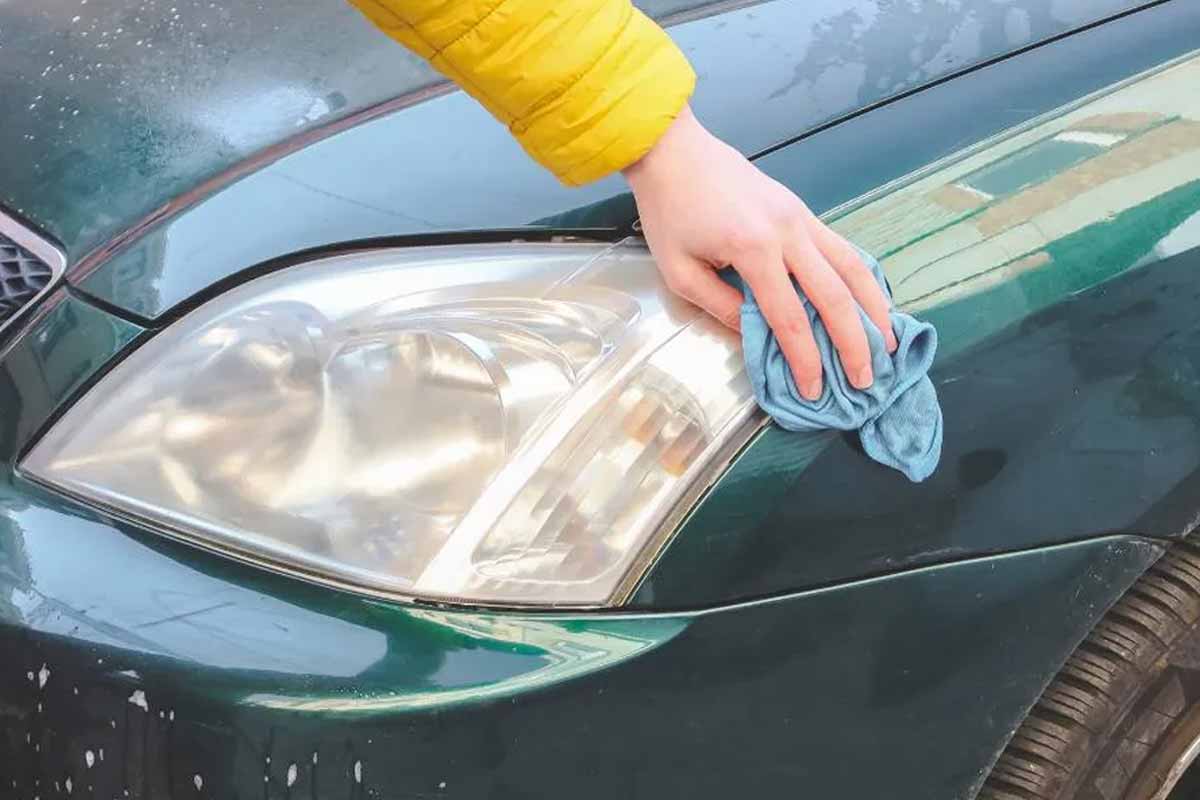Bright road vision starts with clean lenses, because your safety depends on what you see. Tonight or next weekend, you can refresh headlights with a fast, natural trick that respects your car and your wallet. It avoids harsh sprays, saves time, and keeps a little suspense until that satisfying moment you wipe.
Why lenses fog and how to read the signs
Fog often appears when water vapor gets trapped inside covers, while dust and road film cling outside. Sunlight also stresses plastic and speeds oxidation, so clarity fades even on newer cars. Add frequent showers or humid nights, and that soft haze creeps in fast, especially after long highway runs.
Bugs, salt, and tar build layers that scatter light and mute the beam. You notice a yellow cast and a dull pattern on the road. Because glare grows as lenses cloud, your eyes tire sooner. Night driving then feels tense, and reaction time shrinks on sudden curves or wet lanes.
Look for early clues before the dimming gets worse on headlights. The surface may feel chalky, even after washing. Haziness rings the edges first, then crawls toward the center. Clean gently with pH-neutral soap, rinse well, and dry with a soft cloth. Skip abrasive pads that scratch and lock in more haze.
The fast citrus-soda method for crystal-clear headlights
Slice an orange in half and coat the cut face with baking soda. Give it a squeeze so juice wets the powder and starts a fizzy mix. Treat the orange like a sponge and work in small circles. Stay light on pressure. The whole pass takes less than a minute.
The mild acid loosens oxidation while the soda adds soft abrasion. That tandem lifts film without harsh solvents, so plastic stays safe. Keep the motion steady, then wipe with a clean microfiber cloth. Rinse if needed. Dry thoroughly to reveal a sharper lens and a stronger, tighter beam.
Test a small corner first, since older covers vary. Keep grit off the fruit so you do not scratch. Repeat once for stubborn haze, then stop and check. The difference lands fast, and you hear it in reactions: “This is crazy, it works.” Expect fresher-looking headlights with almost no mess.
Natural cleaning that respects your car and home
Many bottled cleaners pack chemicals you do not need. They promise speed, yet they risk skin and air at home. Some mixes include ammonium sulfate and similar agents that wash into streams. Those compounds reduce nutrients in waterways and hurt aquatic life, even when you use only a little.
Choosing earth-based routines helps your budget and the planet. Over ten years, simple swaps could save you about $900 and block 200 pounds of toxic chemicals from slipping into nature. You cut packaging waste, too. Because the method uses fruit and pantry powder, you stay flexible, quick, and ready.
Safety still matters, even with gentle tools. Avoid mixing risky cleaners from your cupboard. Bleach and vinegar together make a toxic gas you can inhale by accident. Keep windows open while you work, and wear gloves if your skin is sensitive. With this citrus method, results come without fear and fuss. Include headlights only where needed in your notes.
Care after cleaning to keep headlights clear longer
Rinse, then dry the lens fully to halt new spots from forming. Buff lightly with a microfiber cloth, because pressure alone can mar plastic. When the cover is clean, add a plastic-safe wax or UV protectant. This slow barrier fights oxidation and helps rain slip away during stormy drives.
If heavy haze remains, repeat the orange pass once more. For severe cases, try a restoration kit with controlled grits, or ask a pro for a quick polish. Avoid harsh solvents that can craze plastic or blur edges. Keep wipes lint-free so fibers do not stick. One mention of headlights in your checklist is enough.
Time your routine so it fits real life. The citrus scrub takes under a minute per lamp, yet plan a few minutes for setup and cleanup. Gather an orange, baking soda, a microfiber cloth, and a small towel. Park in shade, crack a window, and let the lens cool before you begin.
Community reactions, small habits, and cleaner streets
People love visible change that costs cents, not dollars. Comments stack up, and the theme repeats: “I’m shook omg.” Others say only “wow,” because the before-and-after feels instant. That excitement spreads helpful habits fast. It builds a culture of care, where clearer night vision comes from simple steps on headlights.
You also cut clutter from garages and sidewalks. Fewer plastic bottles and fewer paper towels mean lighter bins and cleaner blocks. Volunteers who pick litter carry less load, because households send out fewer throwaway containers. Natural routines often scale like that. Small choices ripple across neighborhoods without noise.
Another win is mindset. Because you see how gentle methods perform, you question expensive, abrasive products more often. You try pantry basics first, then buy only what adds value. Your car looks fresher, and night drives feel calmer. You save time at the store, while your cabin air stays kinder.
A fast routine that fits busy days and budgets
Keep this easy habit on your weekend list. The orange-and-soda pass takes moments, yet the payoff shows the first time you drive after sunset. You gain a sharper road view, while your wallet stays closed. With one soft wipe, headlights look newer, and the ride feels safer and more relaxed.
